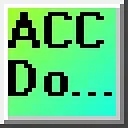PLC Programming Tutorial: Sequential Motor Start Delay
8K views
Apr 10, 2024
In this tech tutorial, we explore a practical PLC programming example for automating the sequential start of seven motors with a five-second delay between each. Using Peter Steinhoff's solution and Do-more Designer software, we'll guide you through setting up individual timers and a down_counter to
View Video Transcript
0:00
Hello and welcome to our tech tutorial channel. Today we're diving into a fascinating topic for
0:05
all you automation enthusiasts out there. A PLC programming example focusing on delaying the start
0:11
of seven motors. Whether you're a beginner or have some experience under your belt, this video aims
0:17
to enhance your understanding of PLC programming using a practical and straightforward solution
0:23
So let's get started. Imagine you have seven motors and you need to program them so that when
0:28
one starts, any subsequent motors will only start after a five-second delay, maintaining the
0:34
sequence in which they were activated. Sounds challenging right? Well thanks to a solution by
0:40
Peter Steinhoff, we have a clear and effective approach to tackle this using Do-more designer
0:45
software. First let's define our task. We have seven motors each connected to a switch. The goal
0:52
is to ensure that after the first motor starts immediately upon activation, any additional motors
0:56
will only start after a five-second delay, preserving the order of activation. Our inputs
1:02
will be the switches for each motor, all normally open. The outputs naturally are the motors
1:07
themselves. The key here is ensuring a five-second delay between each motor starting, following the
1:14
sequence they were turned on. Peter's solution involves using one timer for each motor, labeled
1:19
as on delay in, on delay off and so on, plus an additional down counter timer. This down counter
1:25
doesn't control anything directly but keeps track of the time between motor starts. Let's say you
1:31
want to start motor four. You would take the current value of the down counter, assign it to
1:36
on delay four, and then add five seconds to the down counter. If motor four is the first, it starts
1:42
immediately since the down counter is at zero. If another motor is started shortly after, its delay
1:48
is set based on the down counter's current value, ensuring a five-second gap. By mapping this out
1:54
in a spreadsheet, you can visualize the timing and sequence. This method is not only simple but also
2:00
scalable, allowing for more motors to be added without complicating the logic. Plus, it ensures
2:06
motors start in the order activated by the operator. After developing the PLC program, testing
2:12
is crucial, either through a simulator or on actual machinery. This ensures the program runs as expected
2:19
and allows for any necessary adjustments. To summarize, by using individual timers for each
2:25
motor and a down counter, we can effectively delay the start of each motor by five seconds
2:30
maintaining the sequence of activation. This solution is not only efficient but also adaptable
2:36
for different scenarios and additional motors. And that wraps up our tutorial on delaying the start
2:42
of seven motors using PLC programming. We hope this video has provided you with valuable insights and
2:48
a clear understanding of how to approach similar automation challenges. If you have any questions
2:54
or need further information, feel free to reach out. Thank you for watching and see you in the next video
#Education
#Factory Automation
#Manufacturing
#Programming

